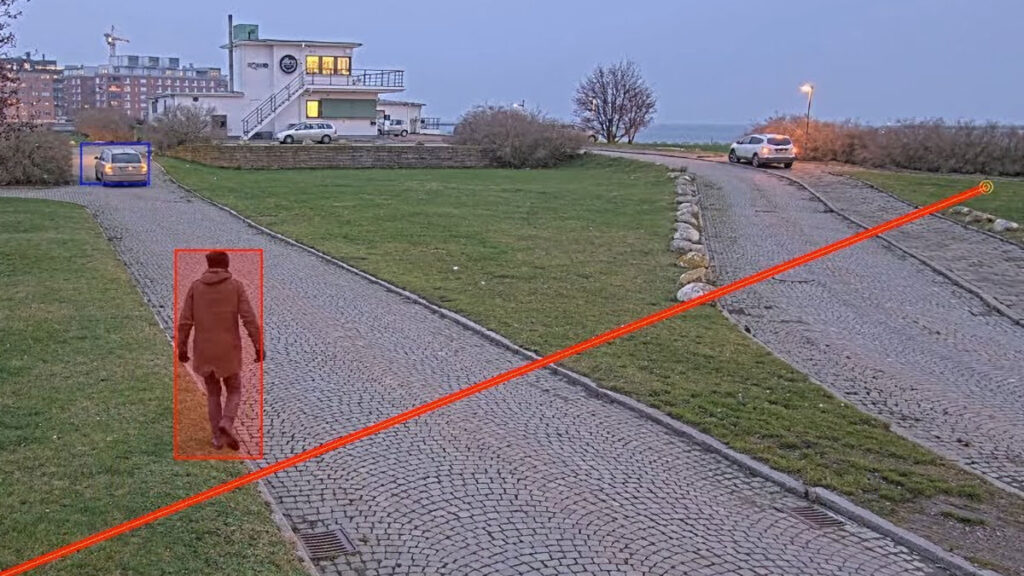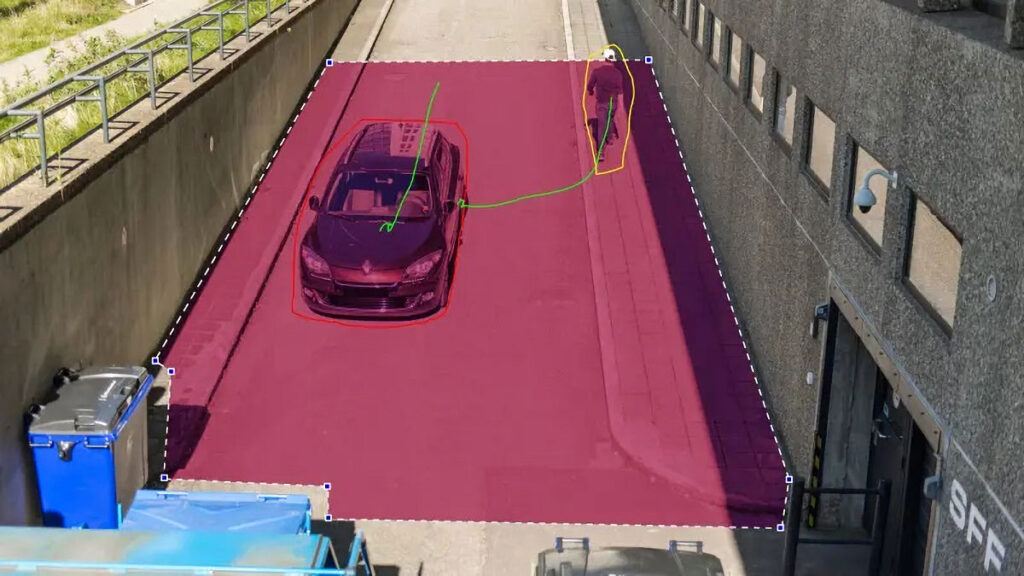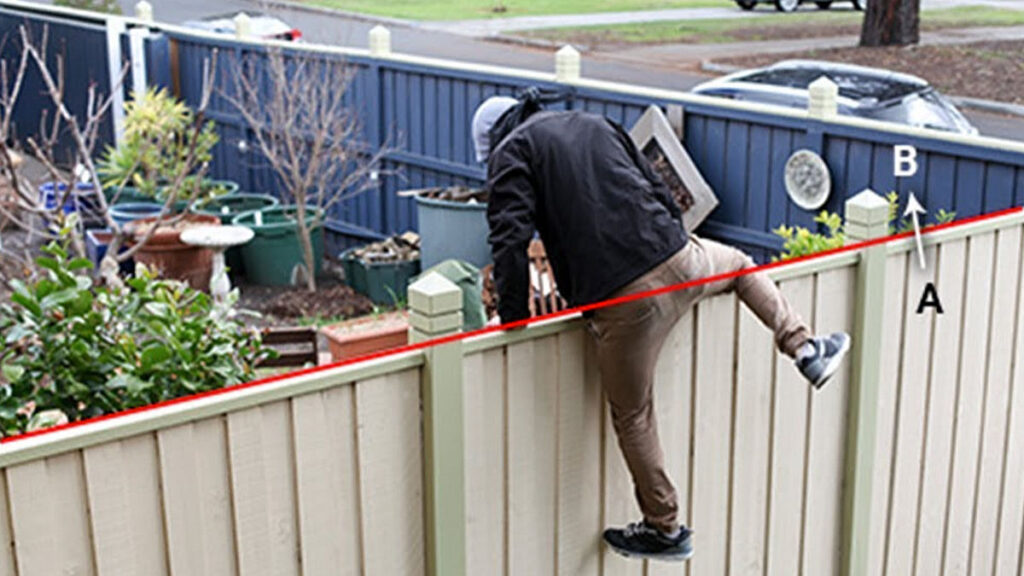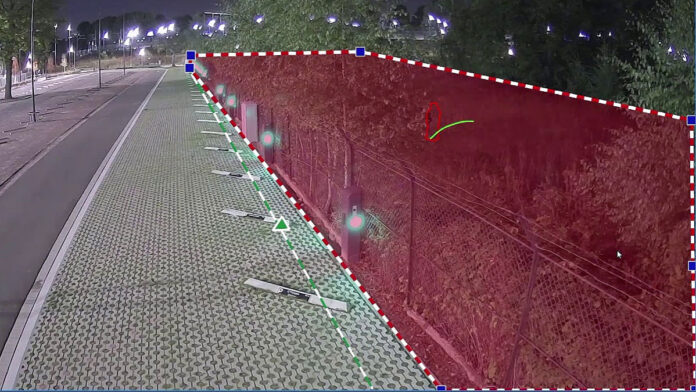Camera PIR Or AI Camera – What’s Best At Detecting Movement In External Applications?
Camera PIR Or AI Camera – What’s best at detecting external movement? When this question started doing the rounds recently it caused some serious reflection at the SEN office.
Experience confirms that external sensing applications are tricky and there are conditions under which most intrusion sensors, including quality dual technology sensors, are going to find themselves stretched to breaking point.
In such applications, a sensor camera able to provide a few frames covering moments of activation proves seriously valuable – so valuable we tend to think most external sensor applications would benefit from integrated cameras that give business owners or control room operators eyes on the trigger.

The toughest conditions we’ve found are hot days – the closer to 37C the tougher – with a strong wind moving trees and shrubs backwards and forwards. This combination of heat and movement leads to triggering of PIR side and microwave side of a sensor, and with both detection technologies in alarm, an event is activated.
Contributing to such challenges are dark external surfaces at closer ranges – within 5 metres – that absorb and radiate heat on cooler days in such a way as to create plumes of warm air that can trigger the PIR side. This makes the sensor vulnerable to gusts of wind causing vegetation movement that sporadically trigger the microwave side of the sensor, leading to false alarms.
Camera PIR Or AI Camera – What’s Best?
We’d argue that in commercial and high security applications these issues can be significant enough to demand moving of sensors to avoid conditions described. Certainly, having a camera integrated into the sensor does allow fast triage of alarm events by security officers or security operators in a monitoring centre. Even still, the underlying cause of such false alarms in certain conditions remains.
So, that brings us to whether a CCTV camera with line-crossing analytics is more reliable in a range of external conditions than a dual technology sensor. In our experience IVA-enabled cameras are more reliable than sensors on hot days – their detection parameters are different and thermal patterns don’t worry them.

Instead, the issues we’ve experienced revolve around reductions in range during the night and false alarm activations generated by nocturnal wildlife, including kangaroos, wallabies and wombats. Other conditions that impact camera IVA solutions include fog and rain, though these attenuate intrusion sensors, too. Alarms can also be generated by wind blown shrubbery but these problem areas can be masked out.
Is a camera installed as a sensor capable of outperforming a quality intrusion sensor in challenging external applications while also offering high resolution video streams? We’d argue that a quality external camera – not the cheapest piece of junk on the shelf – carefully installed to cover a thoughtfully considered area – could outperform an external alarm sensor.
Camera PIR Or AI Camera – What’s Best?
In SEN’s opinion you’d install and commission the camera to specifically cover the most challenging light period and make sure the scene had no moving IR reflections, no wildlife and few or no moving plants. There are negatives with cameras in that you can’t fit them with a 10-year battery and screw them to a wall – there’s star config blue cable and node zero to consider.
But if you’re putting in cameras anyway, then line crossing is a worthy addition. IVA cameras unquestionably have superior image quality – there’s no contest there.
But there are circumstances in which getting them installed where you need them might prove challenging. You can put a wireless camera PIR anywhere there’s RF range. It’s not the same with IP cameras.
We’d be interested in hearing thoughts in the comments from techs who’ve run both technologies side-by-side taking into account parameters like catch performance and false alarm resistance.
You can read more about Bosch video analytics here (we had to pick some one for our external SEO link and Bosch (and i-PRO) do IVA very well), or you can find more SEN news here.
“Camera PIR Or AI Camera – What’s Best At Detecting Movement In External Applications?”










We deploy a large number of external detection systems, often in extremely ‘rough’ environments. There is a marked difference in the performance of devices in urban areas as opposed to more natural ones, which leads us to choosing different approaches to the implementations.
Urban areas have a lot of heat banks and a lot of potential moving objects including debris. In these environments we find that the use of AI driven video detection works extremely well so long as you have the camera detection operating in a realistic volume. For example a camera with a 90 degree FOV at 8MP will work very well at detecting people and vehicles up to about a 20m distance, however beyond that the performance and reliability decreases rapidly. Additionally it is very important to have the IR illumination of the camera aimed correctly so that any IR reflections, including the ground itself, are not blinding the camera’s AI from detecting objects.
Natural areas don’t have the heat bank issues as much as urban areas however they are affected by other concerns such as wildlife. The most irritating cause of false positives is insects at night. They just love the IR and the warmth of the camera body. A good surface bug spray helps but it does not eliminate the issue, which forces you to reduce the sensitivity of the AI, and of course this reduces the effective detection capabilities. Same optical rules apply of course. Using radar type detectors works well here in conjunction with the AI of a camera.
To obtain the highest level of confidence requires a combination of sensor technologies, with the problem being broken into stages:
1/ Detection – detecting ‘something’ on one or more of the sensors (simultaneously). Multi-sensor activation matters here. AI + PIR + Microwave or Radar
2/ Qualification – what that ‘something’ is – AI object recognition to a defined degree / threshold of confidence
3/ Verification – send the an image of the scene to a human operator – not an AI system – to make a determination
It is also necessary here to have a lower confidence level of detection based on a reduced number of simultaneous sensors so that if one sensor is affected by environmental concerns or other such conditions then the detection event still occurs. To be clear on this you may have a camera, a PIR, and a radar all working to detect intrusion in an area, or perhaps some other combination of sensors (it doesn’t really matter what tech for this example) – you would set the detection threshold at say any 2 of the three being active in a given time period. If you get all three you could act instantly. This can reduce the number of false positives and deliver a solid level of performance in even the toughest environments.
Choose the tools for the job and don’t rely on a single method for detection. Overlap two AI cameras, double up on PIR’s, mix-and-match a the environment demands. Adjust for the seasons and the weather as you go.
It’s not easy but it is possible to achieve a high level of detection with a high level of confidence. It takes work and is continuous throughout the year as the weather changes. Keep the detectors as clean as possible, ‘settle’ the sensitivities to the environment, and you have the best chance of success.
Great practical insights, Andrew – thanks for this input.